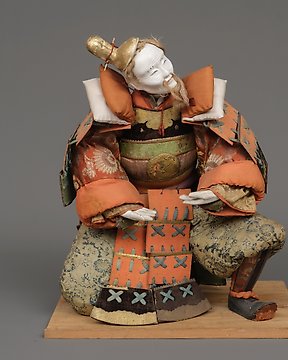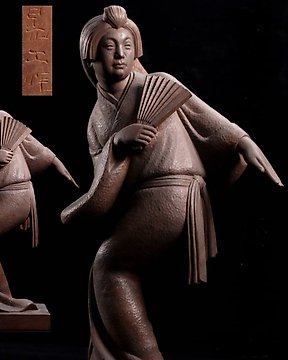
puinen veistos tanssivasta kauneudesta - Puu - 阿部晃工 Abe Koko(1906-1966) - Japani - Shōwa period (1926-1989)
Catawiki päivittää jatkuvasti käyttämäänsä teknologiaa. Käytät tällä hetkellä vanhentunutta selainta. Päivitä selaimesi optimoidaksesi käyttökokemuksesi.
Voit muokata evästeasetuksiasi alla olevilla valinnoilla. Voit päivittää valintojasi ja perua myöntymyksesi milloin tahansa, sekä nähdä yksityiskohtaisen kuvauksen siitä, miten käytämme evästeitämme Evästekäytäntömme.
Nro. 83712823
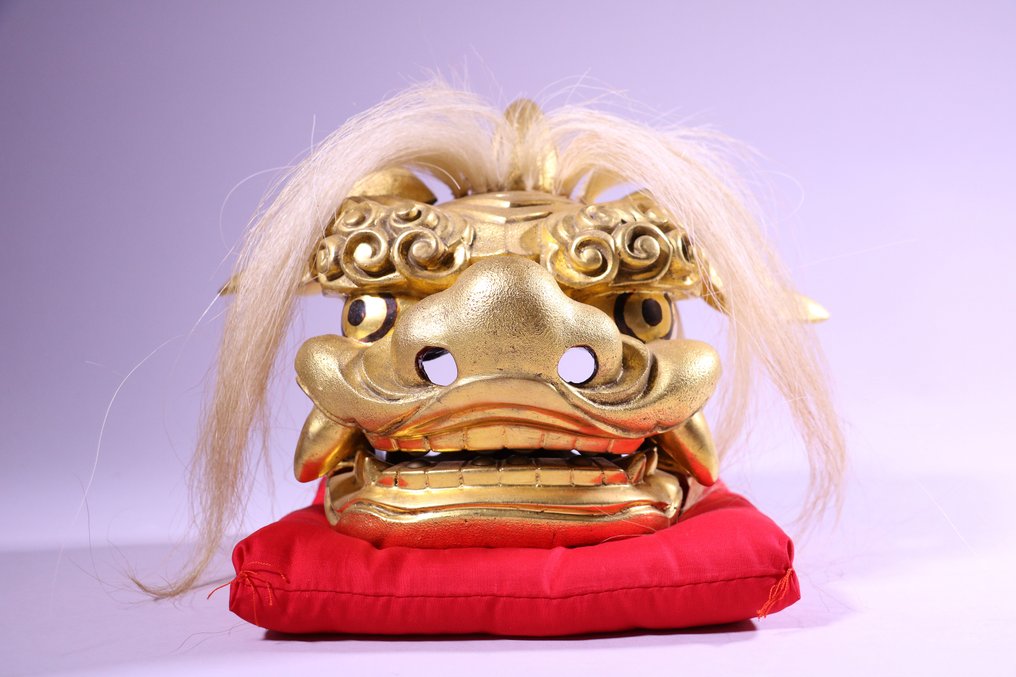
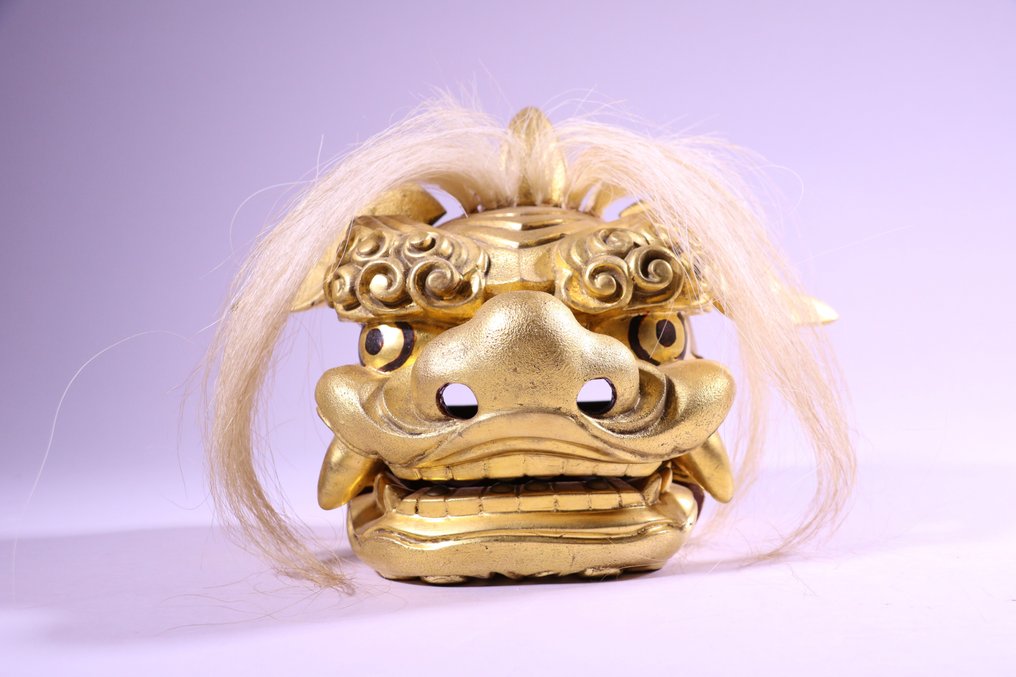
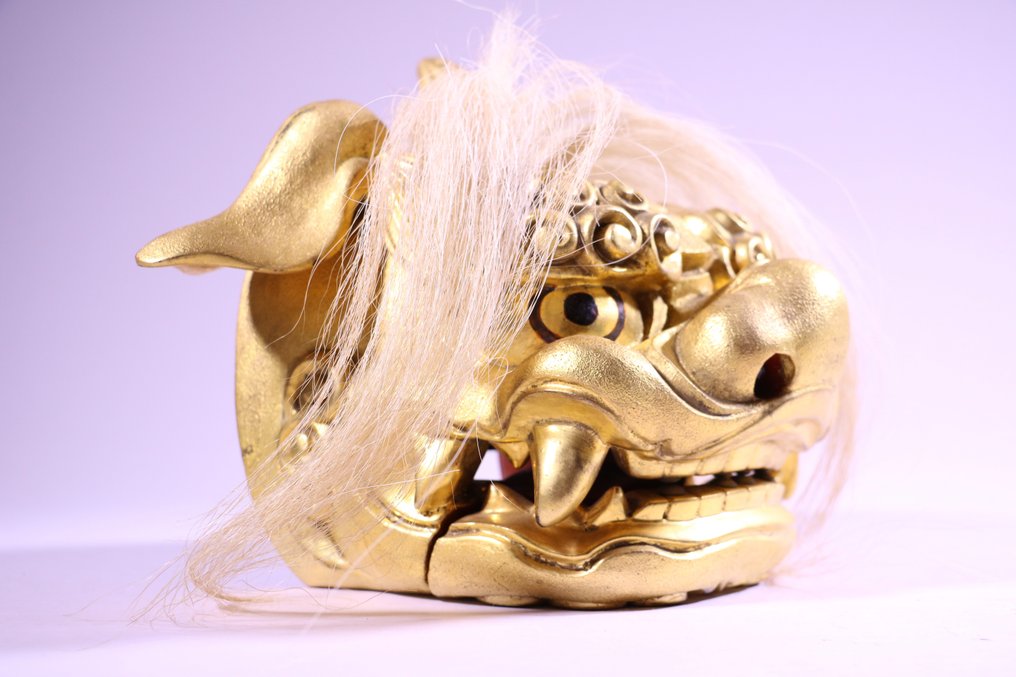
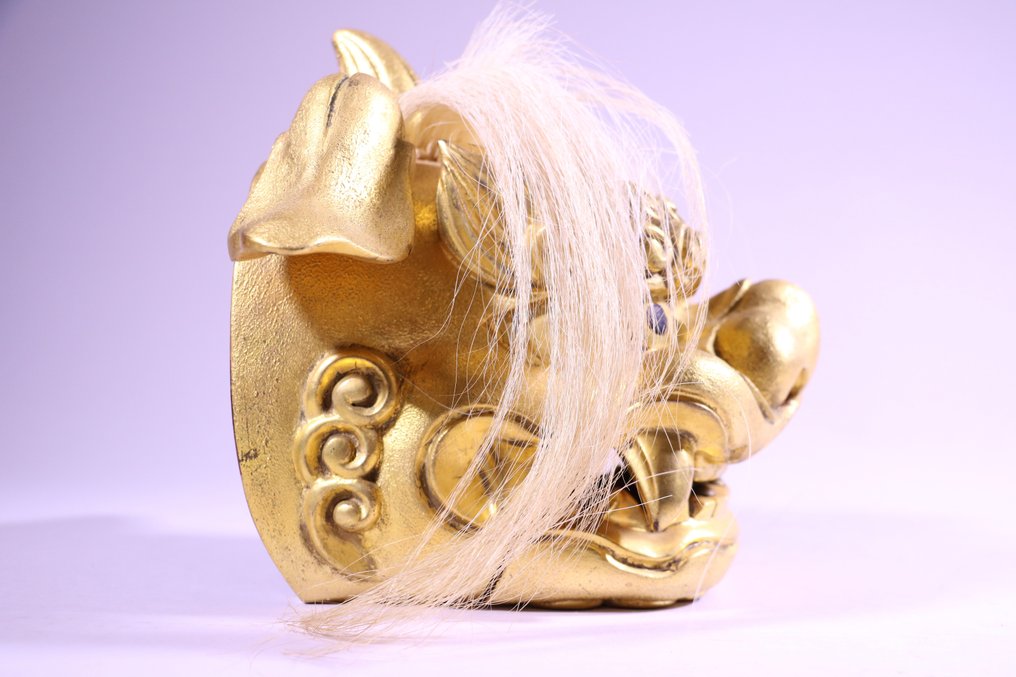
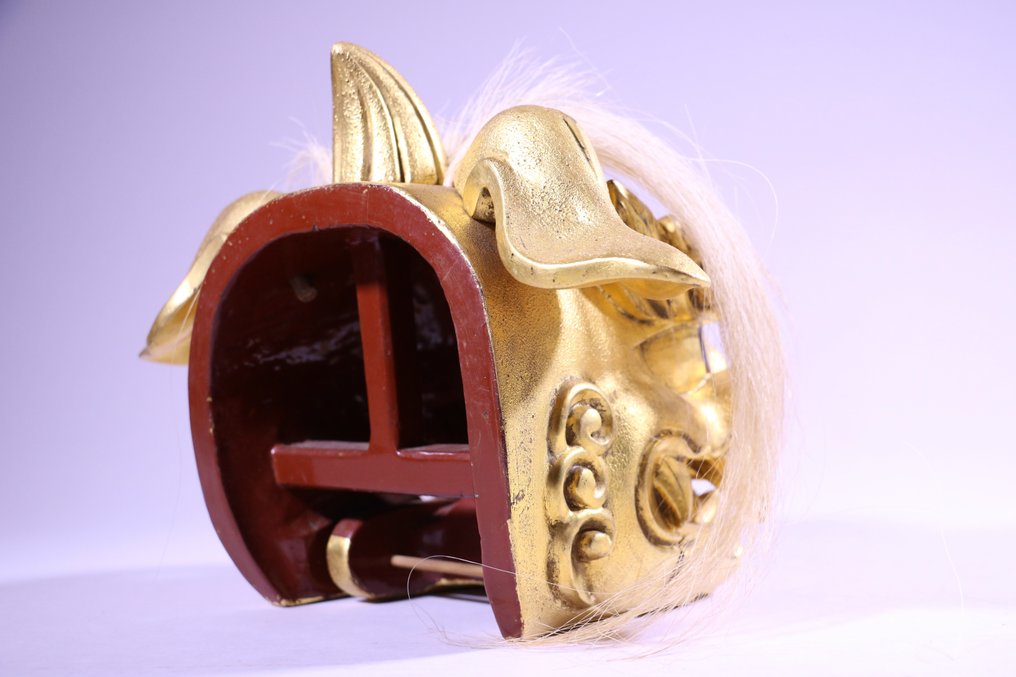
DESCRIPTION
"Shishigashira" (lion heads) in Japanese tradition hold special significance. These items, primarily used in festivals, rituals, and dances, are associated with the "獅子舞 Shishimai" (lion dance).
Traditionally, lion heads are believed to ward off evil spirits and avert calamities. The lion dance, often performed during shrine festivals and local events, is thought to chase away malevolent spirits, bringing fortune and blessings to the community and people. Therefore, Shishigashira are regarded as symbols of exorcism and good luck, embodying wishes for prosperity and health.
Furthermore, due to their imposing appearance and beauty, Shishigashira are popular as decorative pieces. They are frequently displayed during festivals and events, forming an integral part of Japan's traditional decorative culture. Their value as art and craftsmanship is highly esteemed, cherished by many as a reflection of traditional artisan skills and artistic expression.
Japan has a long tradition of the lion dance and the dance is known as shishi-mai (獅子舞) in Japanese. It is thought to have been imported from China during the Tang Dynasty, and became associated with the celebration of Buddha's Birthday. The first lion dance recorded in Japan was at the inauguration ceremonies of Tōdai-ji in Nara in 752. The dance is commonly performed during the New Year to bring good luck and drive away evil spirits, and the lion dancers may be accompanied by flute and drum musicians. It is also performed at other festivals and celebrations. In some of these performances, the lions may bite people on the head to bring good luck. (From Wikipedia).
Almost good condition. Please reffer to the images for the details.
Artist:
Ichimu Yokoyama (1911 - 2000) was a renowned Japanese woodcraft artisan from Inami, Toyama Prefecture. His real name was Zensaku. Born in a region famous for woodcraft, Yokoyama learned the art from his father, who was also a woodcarver, inheriting these traditional skills from a young age.
In 1934, he became independent and made a significant breakthrough by being selected for the 4th Buntenten Exhibition with his work "Heron Screen," a notable achievement in an era when artisan entries were rare. Subsequently, Yokoyama continued to exhibit at the Buntenten and Nitten Exhibitions, receiving numerous awards. In 1953, he was awarded the Hokuto Prize at the 9th Nitten Exhibition, and in 1958, he received a special selection at the 1st Shin-Nitten Exhibition. In 1963, he was recommended as a member of Nitten, and the following year, he was also recommended as a member of the Contemporary Craft Artists' Association.
Yokoyama's works are known for their traditional woodcarving techniques embellished with decorative coloration. His intricate craftsmanship and vibrant colors captivated many, earning him recognition as a prominent Japanese ceramic artist. He was honored with the Yellow Ribbon Medal and the Fourth Class Order of the Sacred Treasure, and his contributions were acknowledged as an Intangible Cultural Property.
Yokoyama's art is especially esteemed in his hometown of Inami, Toyama, and his works remain a significant part of Japanese woodcraft heritage today.
NOTICE
The lot will be carefully packaged and sent by Japan post, DHL or FedEx depend on the situation.
It takes about 3 weeks to receive normally.
Import duties, taxes, and charges are not included in the item price or shipping cost.
These charges are the buyer's responsibility.
Sometimes Customes or delivery company in your country contact you for Customs clearance via phone or email. Please make sure that you could answer the phone. If you don't, the parcel will return to me and it cost more double shipping fee for reshipping.
I appreciate your cooperation.
DESCRIPTION
"Shishigashira" (lion heads) in Japanese tradition hold special significance. These items, primarily used in festivals, rituals, and dances, are associated with the "獅子舞 Shishimai" (lion dance).
Traditionally, lion heads are believed to ward off evil spirits and avert calamities. The lion dance, often performed during shrine festivals and local events, is thought to chase away malevolent spirits, bringing fortune and blessings to the community and people. Therefore, Shishigashira are regarded as symbols of exorcism and good luck, embodying wishes for prosperity and health.
Furthermore, due to their imposing appearance and beauty, Shishigashira are popular as decorative pieces. They are frequently displayed during festivals and events, forming an integral part of Japan's traditional decorative culture. Their value as art and craftsmanship is highly esteemed, cherished by many as a reflection of traditional artisan skills and artistic expression.
Japan has a long tradition of the lion dance and the dance is known as shishi-mai (獅子舞) in Japanese. It is thought to have been imported from China during the Tang Dynasty, and became associated with the celebration of Buddha's Birthday. The first lion dance recorded in Japan was at the inauguration ceremonies of Tōdai-ji in Nara in 752. The dance is commonly performed during the New Year to bring good luck and drive away evil spirits, and the lion dancers may be accompanied by flute and drum musicians. It is also performed at other festivals and celebrations. In some of these performances, the lions may bite people on the head to bring good luck. (From Wikipedia).
Almost good condition. Please reffer to the images for the details.
Artist:
Ichimu Yokoyama (1911 - 2000) was a renowned Japanese woodcraft artisan from Inami, Toyama Prefecture. His real name was Zensaku. Born in a region famous for woodcraft, Yokoyama learned the art from his father, who was also a woodcarver, inheriting these traditional skills from a young age.
In 1934, he became independent and made a significant breakthrough by being selected for the 4th Buntenten Exhibition with his work "Heron Screen," a notable achievement in an era when artisan entries were rare. Subsequently, Yokoyama continued to exhibit at the Buntenten and Nitten Exhibitions, receiving numerous awards. In 1953, he was awarded the Hokuto Prize at the 9th Nitten Exhibition, and in 1958, he received a special selection at the 1st Shin-Nitten Exhibition. In 1963, he was recommended as a member of Nitten, and the following year, he was also recommended as a member of the Contemporary Craft Artists' Association.
Yokoyama's works are known for their traditional woodcarving techniques embellished with decorative coloration. His intricate craftsmanship and vibrant colors captivated many, earning him recognition as a prominent Japanese ceramic artist. He was honored with the Yellow Ribbon Medal and the Fourth Class Order of the Sacred Treasure, and his contributions were acknowledged as an Intangible Cultural Property.
Yokoyama's art is especially esteemed in his hometown of Inami, Toyama, and his works remain a significant part of Japanese woodcraft heritage today.
NOTICE
The lot will be carefully packaged and sent by Japan post, DHL or FedEx depend on the situation.
It takes about 3 weeks to receive normally.
Import duties, taxes, and charges are not included in the item price or shipping cost.
These charges are the buyer's responsibility.
Sometimes Customes or delivery company in your country contact you for Customs clearance via phone or email. Please make sure that you could answer the phone. If you don't, the parcel will return to me and it cost more double shipping fee for reshipping.
I appreciate your cooperation.


